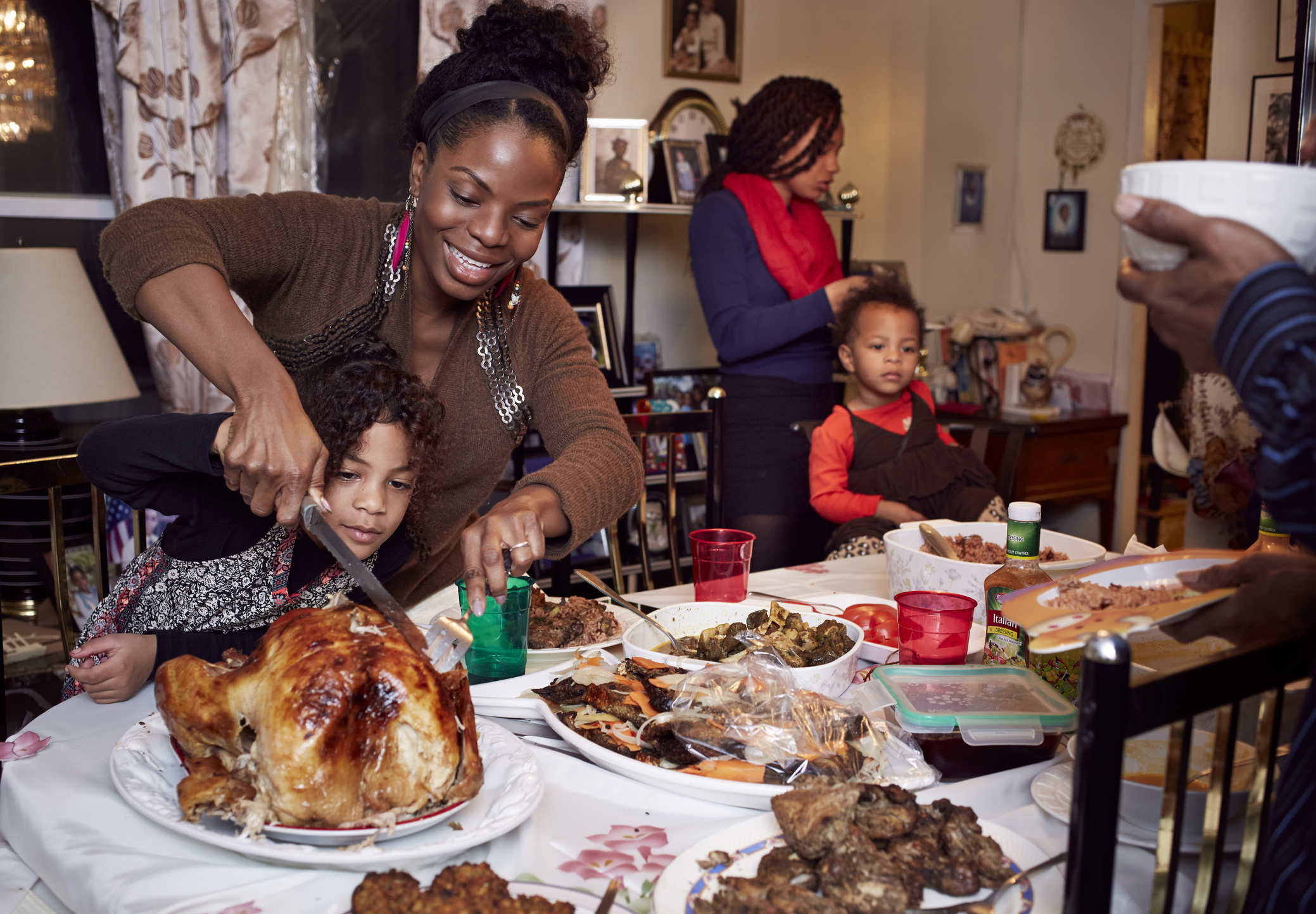From Valentine’s Day to New Year’s Eve, Here Are 147 Holiday Spending Statistics
The phrase “don’t spend it all in one place” can ring true with money. But if you’re looking for a place for holiday spending statistics, you’ve come to the right spot.
We’ve highlighted LendingTree surveys and scoured the best available resources to bring you this holiday spending statistics page.

13 Valentine’s Day spending statistics
- 82% of Americans in relationships — whether dating, engaged or married — planned to give gifts to their significant others on Valentine’s Day in 2023. (LendingTree)
- These Americans in relationships planned to spend an average of $187 on their significant others on Valentine’s Day in 2023. (LendingTree)
- That $187 average was lower than in 2022 ($208), but higher than in 2021 ($144) and 2020 ($142). (LendingTree)
- Men expected to spend 178% more on their valentines in 2023 than women — $286 versus $103. (LendingTree)
- Millennials planned to spend the most among the age groups on Valentine’s Day in 2023, shelling out an average of $284. That’s followed by Gen Zers ($182), Gen Xers ($153) and baby boomers ($63). (LendingTree)
- 27% of consumers who planned to spend on Valentine’s Day 2023 said they might take on credit card debt. (LendingTree)
- 28% planned to get their partner a card or a special meal, while 24% considered giving chocolate or candy. (LendingTree)
- Consumers were expected to spend $25.9 billion on Valentine’s Day in 2023, up from $23.9 billion in 2022. (National Retail Federation)
- 35% of consumers planned to do their Valentine’s Day 2023 shopping online, just ahead of department stores (34%) and discount stores (31%). (National Retail Federation)
- 7% of Americans typically prepare more than three months before Valentine’s Day. (Numerator)
- Consumers spent $4.1 billion on candy, mint and gum in the 2022 Valentine’s Day selling season. (IRI, via Candy & Snack Today)
- 58 million pounds of chocolate are purchased during Valentine’s Day week. (CandyStore.com)
- About 145 million Valentine’s Day cards are exchanged every year, making it the second-largest holiday for doing so. (Hallmark)

10 St. Patrick’s Day spending statistics
- 61% of consumers planned to celebrate St. Patrick’s Day in 2023 — the highest on record. That’s up from 54% in 2022 and 49% in 2021. (National Retail Federation)
- Total spending on St. Patrick’s Day in 2023 was expected to be $6.9 billion — also the highest on record. That’s up from $5.9 billion in 2022 and $5.1 billion in 2021. (National Retail Federation)
- Households expected to spend an average of $43.84 on St. Patrick’s Day in 2023, slightly above $42.96 in 2020 and $42.33 in 2022. (National Retail Federation)
- The most common St. Patrick’s Day spending categories in 2023 were expected to be food (50%), drinks (41%), apparel or accessories (29%) and decorations (26%). (National Retail Federation)
- 36% of 2023 St. Patrick’s Day celebrators planned to buy alcohol, with beer being the most popular choice (70%), followed by spirits (34%) and wine (29%). (Numerator)
- 76% of consumers planned to do 2023 St. Patrick’s Day shopping in person, versus 29% at a mass retailer and 19% at a liquor retailer. (Numerator)
- The percentage of households buying beer increases from 44.5% in February to 46.8% in March. (Numerator)
- Irish beers like Guinness and Smithwick’s show a significant increase in the percentage of households buying them in March, with Guinness rising from No. 17 to No. 9 annually. (Numerator)
- 56% of consumers planned to spend less than $50 on items for St. Patrick’s Day 2023 — the highest percentage in this category among the 14 holidays tracked. (Numerator)
- Beer sales in 2018 (according to the latest data) on St. Patrick’s Day grew by 174% compared to an average day that year. (NIQ)
Nonspending stats of interest
- The metros with the largest share of the population identifying as having Irish ancestry are Boston, Providence, R.I., and Pittsburgh. (LendingTree)
- Hallmark started making cards for St. Patrick’s Day in the early 1920s. (Hallmark)

10 Easter spending statistics
- Easter spending was expected to reach $24.0 billion in Easter in 2023, up from $20.8 billion in 2022. (National Retail Federation)
- Average per-person spending for Easter 2023 was expected to be $192.01. (National Retail Federation)
- The top expected spending categories were food ($7.3 billion), clothing ($4.0 billion), gifts ($3.8 billion), candy ($3.3 billion), flowers ($1.8 billion), decorations ($1.7 billion) and greeting cards ($1.1 billion). (National Retail Federation)
- Cooking a holiday meal (56%), visiting family and friends (50%), going to church (43%) and planning an Easter egg hunt (34%) were the most popular planned Easter activities for 2023. (National Retail Federation)
- Easter is the seventh top-selling week for U.S. retail, with a typical average weekly sales bump of 4%. (NIQ)
- Easter is the top holiday for milk chocolate sales — ahead of Valentine’s Day and Halloween. (NIQ)
- The average price of a dozen eggs in April 2023 rose to $3.27 from $2.52 in April 2022 — a 29.8% increase. (Bureau of Labor Statistics)
- 70% of those celebrating Easter in 2023 planned to buy food. Meanwhile, 50% planned to purchase candy, making it the second most popular holiday for candy sales after Halloween. (Numerator)
- 1 in 5 celebrators in 2023 said they planned to buy gifts. Among that group, 58% planned to purchase toys and games. (Numerator)
- Consumers with children spend 27% more on candy than those without kids. They are three times more likely to buy Kinder Joy and two times more likely to buy Nerds, Sour Patch Kids and M&M Minis. (Numerator)

13 Mother’s Day spending statistics
- Americans purchasing gifts for Mother’s Day 2023 expected to spend an average of $172 — a 24% drop from $225 in 2022. (LendingTree)
- Men planned to spend $227, on average, while women expected to spend less than half — $112 — to celebrate Mother’s Day 2023. (LendingTree)
- Millennials estimated they’d spend an average of $202, more than Gen Zers ($193), Gen Xers ($133) and baby boomers ($107) on Mother’s Day 2023. (LendingTree)
- 57% of consumers planning to give a Mother’s Day gift in 2023 said inflation would impact their spending. (LendingTree)
- 26% of people who planned to give a Mother’s Day gift expected to spend more than they could afford. (LendingTree)
- Consumers planned to spend $35.7 billion on Mother’s Day in 2023, or $274.02 a person. (National Retail Federation)
- The top three gift categories expected for Mother’s Day 2023 were flowers and greeting cards (both 74%) and special outings (60%). (National Retail Federation)
- Consumers were expected to spend $7.8 billion on jewelry, $5.6 billion on special outings and $4.0 billion on electronics for Mother’s Day 2023. (National Retail Federation)
- 1-800-Flowers.com expected to sell around 23 million flower stems for Mother’s Day 2023. (1-800-Flowers.com)
- Mother’s Day accounts for 26% of flower shop holiday transactions. (Society of American Florists)
- Mother’s Day is the third biggest U.S. card-sending holiday, as 113 million cards are exchanged yearly. (Hallmark)
- Mother’s Day was the third-busiest holiday for food delivery in 2022, behind Christmas and New Year’s Day. (DoorDash)
- Mother’s Day is traditionally the busiest day for restaurants, with more than one-third of adults typically dining out. (National Restaurant Association)

10 Memorial Day spending statistics
- Nearly 17 million passengers were expected to fly out of U.S. airports during the 2023 Memorial Day weekend (Thursday to Monday). (Hopper)
- Average last-minute airfare from the U.S. to Europe was $1,300 a ticket for the 2023 Memorial Day weekend, up 50% from 2022 and 40% from 2019. (Hopper)
- Car rental prices for the extended 2023 weekend were $44 a day, down 17% from the same period in 2022. (Hopper)
- From Memorial Day to Labor Day, Americans consume 7 billion hot dogs, which translates to 818 hot dogs a second. (National Hot Dog and Sausage Council)
- 42.3 million Americans were expected to travel 50 miles or more from home for the 2023 Memorial Day weekend — also tracked as Thursday to Monday. (AAA)
- 37.1 million Americans were expected to drive to their destinations during the 2023 Memorial Day weekend, up from 35.0 million in 2022. (AAA)
- Top domestic hot spots for Memorial Day weekend include Orlando, New York City and Las Vegas. (AAA)
- 75% of people planned to celebrate Memorial Day in 2023. The most popular ways to celebrate were grilling or barbecuing (59%), attending or hosting a party (43%) and cooking or baking (23%). (Numerator)
- For Memorial Day 2023, 83% of shoppers planned to purchase food, followed by alcoholic beverages (46%), nonalcoholic beverages (35%), party supplies (16%) and decorations (11%). (Numerator)
- In the four weeks before Memorial Day, sales of summer products increase significantly. Pools and chemicals see a 132% rise, pool tools and accessories increase 121%, sunscreen 109%, pool floats and noodles 81% and grills 54%. (Numerator)
Nonspending stats of interest
- Memorial Day was originally called Decoration Day. (U.S. Census Bureau)
- Memorial Day didn’t become a federal holiday until 1971. (U.S. Census Bureau)

12 Father’s Day spending statistics
- Ahead of Father’s Day 2021, 58% of dads said they wanted quality time with their family, followed by a special dinner (26%) or a thoughtful card (18%). (LendingTree)
- In 2021, Americans expected to spend more on Mother’s Day ($219, on average) than on Father’s Day ($190, on average). (LendingTree)
- Consumers expected to spend $22.9 billion to celebrate Father’s Day in 2023, up from $20.0 billion in 2022. (National Retail Federation)
- Spending per person was expected to reach $196.23 in 2023, up 14.2% from $171.79 in 2022. (National Retail Federation)
- The top Father’s Day gifts in 2023 were expected to be greeting cards (61%), clothing (55%), special outings (52%), gift cards (48%) and personal care items (32%). (National Retail Federation)
- 43% of people expected to shop online for Father’s Day 2023, while 38% preferred shopping at department stores, 24% at discount stores and 22% at specialty stores. (National Retail Federation)
- Father’s Day is the fourth-largest holiday for sending cards in the U.S., at 72 million annually. (Hallmark)
- 50% of Father’s Day cards are for dads, while nearly 20% are for husbands. (Hallmark)
- Wish lists with “Father’s Day” in the title on Airbnb (based on active listings) have increased by 66% since 2022. (Airbnb)
- 79% of consumers planned to celebrate Father’s Day in 2023. (Numerator)
- Father’s Day celebrations in 2023 were expected to involve grilling or barbecuing (42%), cooking and baking (34%) or dining out for food and drinks (27%). (Numerator)
- 35% planned to buy gift cards and 27% planned to purchase alcoholic beverages for Father’s Day 2023. (Numerator)

14 Fourth of July spending statistics
- Americans who planned to celebrate Independence Day in 2023 expected to spend an average of $270 on the holiday. (LendingTree)
- 18% of Americans regret overspending on past July Fourth celebrations. (LendingTree)
- 61% of consumers expected to use cash or a debit card on their Fourth of July 2023 spending, while 24% planned to use a credit card. (LendingTree)
- 37% of people who planned to use a credit card expected to take on Fourth of July 2023-related debt to cover their expenses. (LendingTree)
- 86% planned to spend money for Fourth of July 2023 on food and beverages. Fireworks came in second at 67%, followed by decorations at 44%. (LendingTree)
- 50% of consumers said inflation forced them to cut back on their Independence Day 2023 spending. (LendingTree)
- 87% of consumers planned to celebrate the Fourth of July in 2023, with an average expected spending of $93.34. (National Retail Federation)
- In 2020, only 76% of people celebrated the Fourth of July — the lowest percentage on record. (National Retail Federation)
- Americans expected to spend $9.5 billion on the Fourth of July in 2023. (National Retail Federation)
- A record 50.7 million Americans were expected to travel 50 miles or more from their homes on the Independence Day 2023 weekend. (AAA)
- 4.17 million Americans were expected to travel by airplane for the 2023 Fourth of July weekend. (AAA)
- U.S. hosts made more than $500 million combined during the Fourth of July weekend in 2022, with a median payout of $1,000-plus in extra income. (Airbnb)
- The top destinations Americans searched for July Fourth 2023 weekend were Cincinnati; Louisville, Ky.; Niagara Falls, Canada; Mykonos, Greece; Boulder, Co.; Amalfi, Florence and Sorrento, Italy; Interlaken, Switzerland; and Panama City, Fla. (Airbnb)
- On July Fourth, Americans consume an estimated 150 million hot dogs. (National Hot Dog and Sausage Council)
Nonspending stats of interest
- 73% of fireworks injuries in 2022 happened around the Fourth of July. (Consumer Product Safety Commission)
- Macy’s Fourth of July fireworks display in New York City uses 55 times more fireworks than the average show in the U.S. (Baruch College)

9 Labor Day spending statistics
- 26% of people planned to spend between $75 and $100 on Labor Day in 2023, while 20% planned to spend between $25 and $50 and 18% planned to spend between $50 and $75. (Numerator)
- 89% of consumers planned to purchase food for Labor Day 2023 celebrations, followed by alcohol (55%), nonalcoholic beverages (43%) and party supplies (16%). (Numerator)
- 54% of people expected to buy items on sale for Labor Day 2023, while 35% were going to prepare more budget-friendly meals. (Numerator)
- 17% of consumers thought inflation would significantly impact their Labor Day 2023 plans, while 21% thought it would have no impact. (Numerator)
- Hartsfield-Jackson Atlanta International Airport, Denver International Airport and Dallas/Fort Worth International Airport were expected to be the busiest airports for Labor Day 2023. (Hopper)
- During Labor Day weekend in 2021, U.S. hosts earned more than $300 million, at an average of nearly $750. (Airbnb)
- The top five cities based on nights booked for Labor Day 2022 were Columbus, Ohio; Raleigh, N.C.; Tampa, Fla.; North Kingstown, R.I.; and Jacksonville, Fla. (Airbnb)
- In 2023, domestic airfare and daily rental car rates were trending 15% and 13% cheaper, respectively, than Labor Day 2022. (Kayak)
- Queries for international flights for the 2023 Labor Day weekend were up 8% compared to the same period in 2022. (Kayak)

15 Halloween spending statistics
- Americans who celebrate Halloween were expected to spend an average of $162 in 2023. (LendingTree)
- Millennials planned to spend $220, Gen Zers $169, Gen Xers $139 and baby boomers $79, on average, for Halloween in 2023. (LendingTree)
- 88% of Americans planned to spend on Halloween this year — up one percentage point from last year. (LendingTree)
- The most common purchases for Halloween 2023 were expected to be candy (62%), pumpkins or carving supplies (34%) and indoor or outdoor decorations (both 31%). (LendingTree)
- 27% of Halloween celebrators have gone into debt while overspending on Halloween, including 17% who expected to do so this year. (LendingTree)
- 50% of Halloween celebrators said inflation was expected to impact their spending in 2023 — down from 57% in 2022. (LendingTree)
- Total projected spending for Halloween 2023 was $12.2 billion — up from $10.6 billion in 2022. (National Retail Federation)
- $4.1 billion is expected to be spent for Halloween 2023 on costumes, $3.9 billion on decorations, $3.6 billion on candy and $500 million on greeting cards. (National Retail Federation)
- Witch, vampire, Barbie and Batman were adults’ most popular costume choices for Halloween 2023. (National Retail Federation)
- The top costume picks for kids in 2023 were Spiderman, princess, ghost and superhero. (National Retail Federation)
- The top 10 Halloween candies are Reese’s Cups, M&Ms, Hot Tamales, Skittles, Sour Patch Kids, Starburst, Hershey Kisses, candy corn, Hershey minibars and Snickers. (CandyStore.com)
- In the fourth week of October 2022, the average price of Howden pumpkins (typically used for jack-o’-lanterns) was $4.82. (U.S. Department of Agriculture)
- Americans exchange about 20 million Halloween cards each year. (Hallmark)
- As of 2021, there were 3,227 confectionery and nut stores in the U.S. (U.S. Census Bureau)
- As of 2021, there were 726 rental establishments for costumes and formal wear. (U.S. Census Bureau)

18 Thanksgiving spending statistics
- Potential Thanksgiving hosts planned to spend an average of $396 in 2022 — up from $392 in 2021. (LendingTree)
- Potential Gen Z hosts planned to spend the most — $498 — on Thanksgiving 2022, followed by millennials ($473), Gen Xers ($343) and baby boomers ($212). (LendingTree)
- Potential Thanksgiving 2022 hosts expected to spend $267 on food and drink and $129 on new housewares. (LendingTree)
- Only 26% of Americans intended to be hosts for Thanksgiving in 2022, compared with 47% in 2021 and 41% in 2020. (LendingTree)
- 25% of potential hosts planned to use a credit card to cover some of their Thanksgiving 2022 expenses. (LendingTree)
- Consumers were expected to have to spend 17.5% more on their standard Thanksgiving grocery list in 2022. (LendingTree)
- 56% of Americans claimed that inflation would impact their Thanksgiving budget or plans in 2022. (LendingTree)
- In 2022, shoppers collectively spent $5.3 billion on Thanksgiving, $9.1 billion on Black Friday and $11.3 billion on Cyber Monday. (Adobe)
- 196.7 million consumers went shopping over the Thanksgiving holiday weekend in 2022, an increase from $179.8 million in 2021. (National Retail Federation)
- Shoppers spent an average of $325.44 on holiday shopping during the Thanksgiving weekend in 2022, up from the previous year’s average of $301.27. (National Retail Federation)
- On Thanksgiving 2022, Americans were expected to waste more than 305 million pounds of food. (ReFed)
- A round-trip ticket for Thanksgiving domestic air travel was expected to cost $282 in 2022, $40 (or 17%) more than in 2021. (Hopper)
- The cost of international round-trip airfare for Thanksgiving 2022 increased by 30% and was priced at $842 a ticket. (Hopper)
- Renting a car during Thanksgiving 2022 week cost an average of $62 a day — 22.5% less than in 2021. (Hopper)
- The busiest airports for Thanksgiving weekend in 2022 were trending as Hartsfield-Jackson Atlanta International Airport, Dallas/Fort Worth International Airport and Denver International Airport. (Hopper)
- 16 million Thanksgiving cards are exchanged each year. (Hallmark)
- Almost 29% of U.S. adults planned to spend more than $500 on Thanksgiving travel expenses in 2022. (The Vacationer)
- 97% of people planned to celebrate Thanksgiving 2023, making it the most widely celebrated holiday of the year. That’s 1 percentage point ahead of Christmas. (Numerator)

17 winter holidays spending statistics
- The amount of holiday debt taken on by Americans who accumulated it in 2022 averaged $1,549, up from $1,249 in 2021 and $1,381 in 2020. (LendingTree)
- 81% of Americans planned to give a gift during the 2022 holiday season. (LendingTree)
- 84% of millennials, 81% of Gen Zers, 80% of baby boomers and 78% of Gen Xers planned to give a gift in the 2022 holiday season. (LendingTree)
- 37% of consumers accumulating holiday debt in 2022 expected to take five months or more to pay it off. (LendingTree)
- 59% of these consumers said their debt came, at least partly, from credit cards. Meanwhile, 24% said it came from either store cards or buy now, pay later (BNPL), and 20% borrowed from friends and family. (LendingTree)
- 91% of consumers planned to celebrate the winter holidays, which include Hanukkah, Christmas and Kwanzaa, in 2022. (National Retail Federation)
- 60% of holiday shoppers started browsing and buying before November in 2022. (National Retail Federation)
- The average amount spent by shoppers in 2022 was forecasted to be $832.84. (National Retail Federation)
- During the 2022 holiday season, e-commerce made up 21.6% of retail sales, up from 20.9% in 2021. (Mastercard)
- The revenue share for BNPL rose by 9.2% compared to the same period in 2021, peaking the week before Christmas. (Adobe)
- Total holiday season online spending in November and December was expected to reach $209.7 billion in 2022. (Adobe)
- Christmas was the busiest holiday for food delivery in 2022, followed by New Year’s Day, Mother’s Day and Veterans Day. (DoorDash)
- Consumers expected to spend $1,430, on average, on the 2022 winter holiday season: $754 on gifts, $452 on travel and $224 on entertainment. (PwC)
- About 54 million passengers were expected to depart from U.S. airports between Dec. 18, 2022, and Jan. 3, 2023 — 20% more travelers than in 2021. (Hopper)
- An average of nine gifts or gift cards were expected to be purchased for the holiday season in 2022, compared with 16 in 2021. (Deloitte)
- 73% of American households expected higher prices in the 2022 holiday season compared to 2021. (Deloitte)
- Christmas is the biggest time for sending cards in the U.S., with about 1.3 billion sent each year. (Hallmark)

6 New Year’s Eve spending statistics
- 78% of U.S. consumers plan to celebrate New Year’s Eve at the end of 2023. (Numerator)
- 12% of Americans plan for New Year’s Eve more than three months in advance. (Numerator)
- 51% of consumers plan to gather with friends and family for New Year’s Eve 2023. (Numerator)
- 95% of Americans plan to make a New Year’s Eve 2023-related purchase. (Numerator)
- 76% of consumers plan to purchase food for New Year’s Eve 2023, while 52% expect to purchase alcohol. (Numerator)
- 36% of Americans plan to spend less than $50 on New Year’s Eve 2023, while 35% expect to spend between $50 and $100 and 29% plan to spend more than $100. (Numerator)
Nonspending stats of interest
- Hallmark made its first New Year’s cards in 1915. (Hallmark)
- The Romans first observed New Year’s in 153 B.C. (Hallmark)
Sources
- LendingTree
- National Retail Federation
- Numerator
- IRI, via Candy & Snack Today
- CandyStore.com
- Hallmark
- History
- NIQ
- Bureau of Labor Statistics
- 1-800-Flowers.com
- Society of American Florists
- DoorDash
- National Restaurant Association
- U.S. Census Bureau
- Hopper
- National Hot Dog and Sausage Council
- AAA
- Airbnb
- Consumer Product Safety Commission
- Baruch College
- Kayak
- U.S. Department of Agriculture
- Adobe
- ReFed
- The Vacationer
- Mastercard
- PwC
- Deloitte
- National Museum of African American History and Culture
